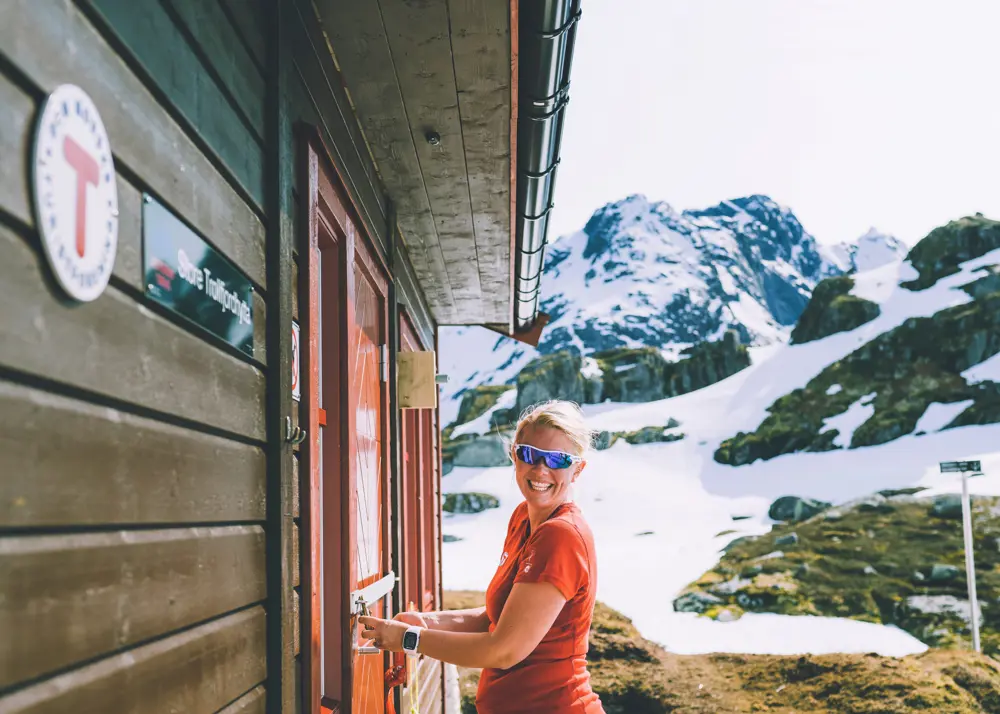
How to calculate walking time on a mountain hike
When DNT states that it takes five hours to walk from one cabin to another – why do I use seven? We'll show you how to calculate time when planning your hike.
How to calculate the time
- Normal walking time is 3.5 km per hour on trails in the mountains, with a 10 kg backpack on your back.
- On steep slopes, you spend 15 minutes per 100 meters of ascent.
- Add 1 hour break per 5 hours trip – for adults.
- Children under the age of 10 need twice as much time as adults.
- Children over the age of 10 need 50 percent more time than adults.
Ever since the Norwegian Trekking Association was founded in 1868, the question of distance between A and B has been an important topic. Back then, as today, it was the walking time that indicated how long a route was. Until the 1990s, this was four kilometres per hour. Today's times are calculated based on the walking time of an adult in normal good shape, with a backpack of 10 kilos. We expect three and a half kilometers per hour on marked trails in partly hilly mountain terrain.
Your own fitness, the pace of the others in the group and the size of the group, weather and driving conditions can cause the trip to be longer than expected.
If it is particularly wet, snow or fog, the time indications will be too short.
Steep
The time indications are thus the time it takes to walk the route. The experts who calculate routes use a short trimeter to count kilometers from A to B. In addition, they enter all the variants that mean that the distance between the two places cannot be converted into 3.5 km/h.
In the calculations, 15 minutes are added per 100 meters of steep climb, which means that the vast majority of us climb 400 meters per hour when the terrain is steep. Where it is steep downhill, it is faster, then 30 minutes are calculated at 400 meters. The times also take into account conditions such as coarse scree, marsh and wading.
Count on the break
The times stated are without breaks. On a five-hour trip, DNT recommends adding a minimum of one hour for rest and rest. On trips that are over seven hours, you get more tired, and more time should be set aside for breaks.
The time you are out is often longer than the stated walking time. On a sunny day, there is no point in arriving early. If it rains, you want to get there as soon as possible.
Doubling with children
More and more people are taking their children on a trip over Besseggen or up to Galdhøpiggen, but forget to add hours that correspond to the children's length of legs.
A rule of thumb is to double the walking time for children under the age of ten. If they are between ten and 14 years old, the walking time is extended by 50 percent. Of course, this depends on the children's previous hiking experience.
Preparation
As you have gone for a few walks, you will find your rhythm and walking speed. Then you can plan your trip accordingly. Before, you might walk four kilometres per hour, now you're down to three. What is your speed? Try it out, and you will soon be able to calculate your walking time from A to B. We have made a rough guide. Today's hiking maps are perishable and are often corrected. If you are planning your trip in May, but do not leave until July, you MUST check the latest version of the map on UT.no.
See also



